Have you been in a relationship where you feel that your partner is avoiding you by spending a lot of time at work, with friends or away from you? Maybe even when you’re physically together, the person is distant and disengaged.
Or perhaps you feel your partner is avoiding depth and commitment. They seem to try to throw away your relationship when it becomes uncomfortable, when there are emotional expectations, or when they are required to make sacrifices.
These are some of the familiar signs of a partner who may have an avoidant attachment style.
Now, on the other hand, you may find yourself with someone who seems to have an insatiable need for connection. Their attachment style feels like they can’t get close enough.
This person might want lots of reassurance that you still love them, and become agitated over things like a delay in responding to a text or call. The anxious partner wants to be regularly reassured that you aren’t abandoning them.

Does This Mean We’re Doomed?!
Loving somebody who has an anxious attachment style or who has an avoidant attachment style doesn’t mean that the relationship won’t work. It simply means that there is understanding to be had and work to be done.
But this doesn’t mean that it doesn’t feel overwhelming. Loving someone with anxious attachment can feel suffocating and loving someone with avoidant attachment can feel lonely.
Nonetheless, this doesn’t have to end your relationship or make it difficult to enjoy being together. By understanding why they attach in an anxious or avoidant style and how love avoidance may affect your partner and your relationship, you can connect in a new healthy way.
The psychological area of attachment theory helps us understand that sometimes a partner shows up because there are core issues that affect the way their relationship patterns.
We often personalize the attachment style of a partner and ask “Why can’t they just be closer to ME?” or “Why can’t they trust me more and give me space?” The truth is that these patterns usually exist for them in relationship after relationship.
But read on… because there is hope for all people to be able to bring themselves into a secure attachment style!
What Is Avoidant Attachment In Relationships?

During the initial stages of your romantic relationship, your partner may have seemed mysterious. They didn’t speak too much and maybe they were slow to open up. This created intrigue.
But now, perhaps you’ve been together a while. You might feel like your emotional needs are going unmet. Perhaps your partner uses strategies like alone time or silent treatment to take a break from the needs of the relationship.
An avoidant attachment style may mean maintaining physical distance, but it also may mean that they are there-but-not-there. This can be especially frustrating for an anxious person.
Or perhaps they use physical intimacy to supplement emotional connection. It’s not uncommon for people with avoidant attachment style to be emotionally distant but sexually plugged in.
A person with an avoidant attachment style may be critical and judgmental of themselves and others as they try to make sense out of the drive they feel to create emotional space between themselves and others.
People who attach avoidantly tend to be uncomfortable with emotional “heavy lifting” in a relationship, which may include conflict resolution, problem-solving, future-planning, or conversations that have a lot of emotional closeness.
People with an avoidant partner often feel lonely, or are left wondering what they’ve done wrong.
Why Is An Avoidant Person Like That?
You may feel tempted to put their behavior down to neglect, selfishness or egocentricity. Avoidant attachment style often feels that way. It may even feel like cruelty. Being on the receiving end of avoidant attachment style is often a painful, lonely place to be.
It’s important to consider that, for the avoidant partner, this can be a painful experience for them also. Usually the distance is created because, somewhere in their past, they learned that closeness was unsafe and detachment felt protective.
To deal with an avoidant partner you need to consider that despite their outward confidence, they are scared to let their guard down. Their staunch self-sufficiency comes from a deep fear that emotional closeness will create risk.
Vulnerability means that you’ve opened yourself up to being hurt. It is better to keep that shielding up and not take the risk. The avoidant partner learned this somewhere in their past – usually in childhood.
People with an avoidant attachment style often have a core wound around emotional neglect. If, in childhood, their emotional needs weren’t met, they may have built up extreme defenses around vulnerability.
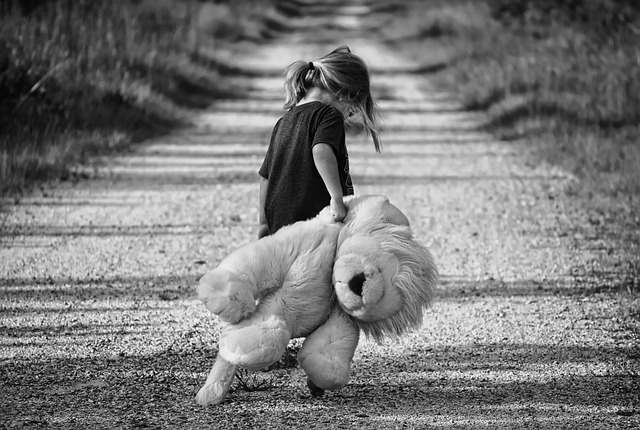
This is especially true for children who were punished, ignored, or humiliated when they were in emotional distress. The lesson learned and carried throughout life for this person is that emotional intimacy is a high risk area. Avoidant tendencies usually develop early on.
Sometimes these avoidant children are recognized as having positive adaptations, such as being a “self-starter” or an “independent thinker.” The child may be able to skillfully self soothe when they are upset. But careful observation often shows that there is a significant challenge in developing healthy attachment patterns early on.
They grow up not being able to experience uncomfortable situations in their relationships, which is why they want to avoid them. Emotional distance feels very comfortable. This means they are distant and put up barriers within their relationship because being cared for with kindness generates unfamiliar feelings for them.
What Does Anxious Attachment Look Like?
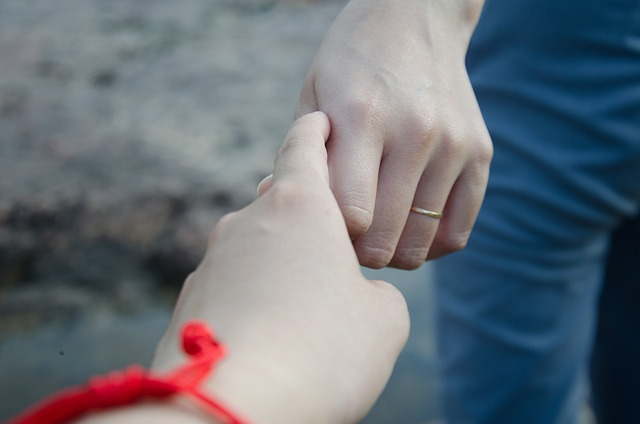
Now let’s look at the other side of the coin – anxious attachment.
An anxious attachment style may look like wanting lots of reassurance that the relationship is intact. A partner with anxious behaviors may feel like they need to be convinced over and over again that they are wanted, loved, and that their partner is devoted.
Sometimes this is described as “neediness” or “clinginess”, but those kinds of remarks don’t convey well how truly uncomfortable the situation is for an anxiously attached person. There may be persistent worries about betrayal, abandonment, or rejection. For the person who lives in an anxious attachment style, this is a painful way to live.
Often, people with anxious attachment unintentionally push people away with their needs and end up confirming their own fear of abandonment. This usually creates the anxious-avoidant-relationship dynamic. (We’ll talk in a minute about how to make an anxious-avoidant-relationship work.)
When a person who is anxiously attached has a partner pull away, their stress of the anxious person rises. In subsequent relationships, the pattern is often to descend into an even more anxious attachment style, in the hopes of preventing real or perceived rejection and abandonment.
If Someone has Anxiety, Does That Mean They Have Anxious Attachment?
It’s important to note that anxious attachment style and anxiety disorders (such as generalized anxiety disorder or panic disorder) are not the same thing.
Anxious attachment describes a specific relational approach style, while the other clinical diagnoses may be present around things like a school exam or a work interview.
While both anxious attachment and anxiety disorders have the same kind of root emotion – a profound sense of worry and fear – the attachment style is specific to worry and fear about the status of a relationship, and the attention and love of a specific person.

Common Signs Of An Anxious Attachment Style
Although most people have occasional anxious thoughts, especially when the relationship is new, the difference with someone with an anxious attachment style is that they have intense anxious thoughts much more often.
For example, they may have thoughts such as:
What if he/she doesn’t love me as much as I love him/her?
What if he/she is hiding something from me?
How do I know if they’re lying to me or not?
What will I do if they leave me?
What if he/she is cheating on me?
Am I worthy of them?
What if he/she doesn’t text me back?
I have to make this work at all costs!
Thoughts like this make it very hard for an anxiously attached person to show up grounded and as their authentic self in the relationship.
In each new relationship, they may find themselves saying “I’ve never felt this close to anyone before!” Their friends and loved ones may find themselves saying “here we go again.” The intensity of being anxiously attached can leave them feeling overwhelmed, as they crave connection.
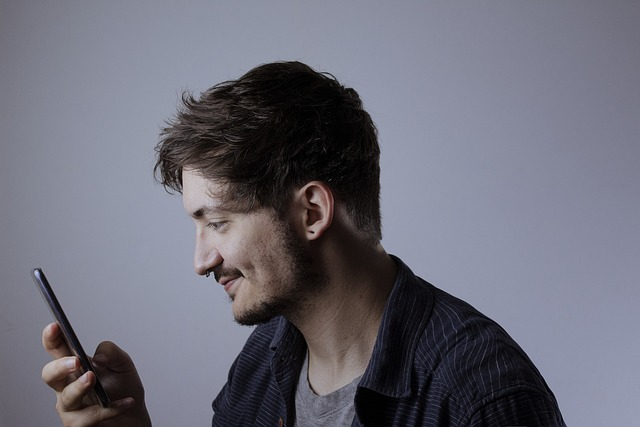
Sometimes anxious attachment styles include behaviors like:
…being controlling and overly needy.
…checking up on your partner on social media.
…doing a drive-by to make sure your partner’s home.
…checking your partner’s cell phone while they’re in the shower, etc.
…insisting a partner share location tracking.
…demanding passwords to email or social media and other encroachments upon privacy.
…investigating ex-partners or people who they are social media friends with.
…lots of prompting questions to provoke reassurance – “do you think I’m pretty”, “how much do you love me”, etc.
…needing lots of check-ins when they are separated from their partner.
…becoming upset and agitated if texts or calls aren’t responded to promptly and being unsatisfied even when there is a reasonable explanation.
Such behaviors stem from a deep fear of abandonment. While breakups are hard for most people, ending relationships is much harder for people who suffer from anxiety.
What is A Fearful Avoidant or Anxious Avoidant Attachment Style?
Fearful avoidant attachment refers to an attachment style that has elements of anxious attachment styles and avoidant attachment styles. Sometimes this attachment style is referred to as anxious avoidant or ambivalent attachment.
This type of attachment often leaves partners confused and unsure about how to meet their partner’s needs. Dating an anxious avoidant partner often leaves people struggling to know where they stand and working to maintain relational security.

Anxious avoidant attachment styles are more than just two attachment styles put together. This attachment style is characterized by a push pull dynamic. There is a “come here” but also “go away” intensity. Insecure attachment styles like this are difficult for partners who have a secure attachment style, but even more challenging for anxious and avoidant partners.
The attachment energy is referred to as both fearful and avoidant attachment because the person is protectively avoidant in the way they emotionally connect, but also fearful (anxious) of losing the person and needing reassurance. They often have an inability to self soothe their own (largely unmet) emotional needs.
Such a relationship can be frustrating for both partners. There is attachment anxiety as well as characters common to the way avoidant partners behave, so often these relationships have a high degree of drama and conflict.
Figuring out how to navigate a relationship like this can be challenging.
How Does Fearful Avoidant Attachment Happen?
Like other attachment styles, fearful avoidant attachment has roots in early childhood. In attachment theory, this is considered a disorganized attachment style. We call it this because both the anxious and avoidant styles seem to have a clear goal for “safety,” while the fearful avoidant does not.
To the anxiously attached person, they are most comfortable with maximum connection. For the avoidant attachment style, they are most comfortable with measured connection and emotional distance. For the person with characteristics of both anxious and avoidant styles, there is no clear formula for ease.
This is normally because, as a child, they were not able to create any organized way (hence “disorganized”) to get their needs met. Sometimes there was abuse, neglect, or unpredictable/inconsistent parenting.

Sometimes this style of attachment is referred to as insecure attachment, because the person has a hard time creating security and trust with both themselves and others.
For someone living with insecure attachment, there may be times when they rely heavily on others for emotional stability and other times when they push people away. There is no secure path for interpersonal trust and safety.
Someone with insecure attachment will greatly benefit from doing loving and self-compassionate work around their childhoods and around the way that anxious and avoidant relationship patterns have affected their life.
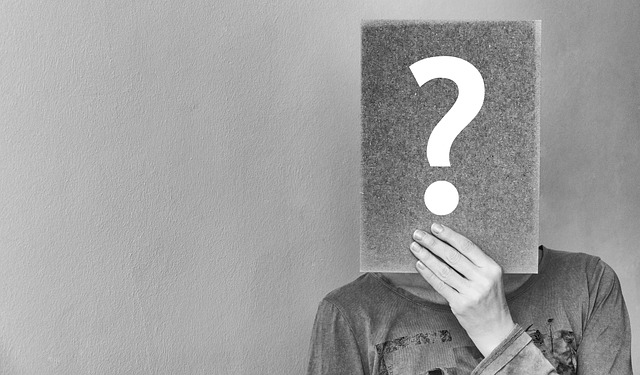
Can An Anxious-Avoidant Relationship Work?
People with avoidant and anxious attachment styles are often drawn to each other, because the characteristics of the two attachment styles activate each other. So, can an anxious avoidant relationship work? Of course it can, but it’s a journey.
Even if you don’t meet all of the characteristics of anxious or avoidant attachment styles, you have probably found yourself in the anxious avoidant cycle before. For example, they pull away, which makes you feel a bit worried and you feel anxious… you feel the need to do something to bring them back closer to you.
Or perhaps it’s been the other way around – you feel someone drowning you in physical affection and emotional intimacy and you feel like you need to take a big giant step away to get some breathing space.
The anxious avoidant relationship cycle is probably something you’ve had at least a taste of in your life.
These patterns are not uncommon in romantic relationships as occasional moments of ebb and flow. But when they are traits of fixed adult attachment styles, they often lead to unhealthy behaviors and the attachment issues often grow into an unstable relationship.
In order to make an anxious avoidant relationship work, it’s helpful to understand exactly why the magnetism in anxious avoidant relationships exists.
When it comes to adult attachment styles, there is some truth to the sentiment that opposites attract. For the avoidant partner, the anxious partner’s personality may not be enjoyable, but it’s probably familiar based on what they experienced in childhood.

Likewise, for the person in an anxious attachment style, the avoidant attachment style often feels familiar. The anxious partner may spend a lifetime trying to get a “do-over”, attempting to win over the avoidant emotional intimacy that they longed for in childhood when their needs weren’t met.
When we don’t do the intentional work necessary to raise our own self awareness and learn the skills needed to develop a healthy relationship, our default attachment style may go on directing the course of our lives.
We are hard-wired to default to the familiar, regardless of whether or not the results of those default choices work for us. This is because attachment styles are usually set in childhood – in our earliest emotional architecture.
In anxious-avoidant romantic relationships, although you may genuinely love each other, your individual pain-body wounds get activated again and again if you haven’t healed from past trauma.
This can have a disastrous impact on you and your relationship – especially as the avoidant behavior may trigger more anxiety in the other person, or vice versa. However, this doesn’t mean that it is impossible for partners in an avoidant attachment relationship to find success.
Can anxious avoidant relationships work? Of course they can, if both parties are willing to do the work required to heal. The healing always needs to happen first with self – with childhood and other past traumas – and then together, relationally.
What Is A Secure Attachment Style?
In attachment theory, the term “secure” refers to an attachment energy that is relationally appropriate, with some core characteristics.
In general, people who exhibit secure attachment are able to…
… set boundaries and respect the boundaries of others.
… understand their own emotional needs and manage their own feelings.
… maintain self awareness when a partner wants to draw them into the anxious avoidant trap.
… manage and cultivate healthy adult relationships.
… vet partners for emotional trust and safety before opening up deeply.
… have a positive sense of self-esteem.
… stay grounded and secure around other attachment styles.
… ask for what they need/want, and are able to tolerate a “no”.
…may have had attachment issues in the past and are mindful about staying in secure attachment.
… are able to respond in a healthy way when they are triggered or in conflict.
People with secure attachment are able to maximize three key factors – they operate with good, rational thinking, emotional intelligence, and healthy, responsible decision-making in their relationships with others.
This think-feel-do remains aligned when they are in healthy relationships, but, importantly, also when they are in challenging situations with an avoidant person or even an anxious partner. Other attachment styles do not push them out of the “secure zone.”

How Do You Deal With An Avoidant Partner?
The good news is that no matter what childhood experiences you or your partner have experienced, you can create healthy relationships.
In order to do so, both you and your partner will need to be committed to healing past traumas for the relationship to work. You may need to give your partner more space and your partner may need to push themself in order to shift into a more secure attachment style.
In an avoidant attachment relationship, the impulse may be to chase them and create the anxious-avoidant relationship dynamic, but that is almost never a recipe for success. Avoidant attachment style needs a very specialized approach.

Over time both avoidant and anxious partners can become more secure in a stable relationship. Here are seven ways to deal with a partner with an anxious-avoidant attachment:

Over time both avoidant and anxious partners can become more secure in a stable relationship. Here are seven ways to deal with a partner with an anxious-avoidant attachment:
- Give them plenty of space. If they need to withdraw, then let them.
Somebody with an avoidant attachment style may benefit from space. This gives them space to think, consider, evaluate their priorities, and get clarity. When an anxious partner crowds them, it often pushes them further away. Loving an avoidant person with open arms may help the relationship.
- Don’t take it personally. This isn’t about you.
People with an avoidant partner often wonder what they did wrong. They experience the avoidant attachment as a personal rejection and ruminate on what they can do differently. Rest assured, if this is true avoidant attachment, it is consistent throughout their relationships and likely isn’t specific to you.
- Reinforce the positive actions that you like and tell them what you value in the relationship.
Sometimes we get so narrowly fixated on what we want to change that we forget to grow what it is that we DO enjoy. When it comes to continuing behaviors we enjoy, there is no better motivator than positive reinforcement. Often the person with avoidant attachment style may really appreciate support as opposed to critique.
- Listen and offer understanding. Be open to listening to your partner’s feelings and issues. The key thing is to listen to understand, not to fix a problem.
So many times, we begin with “we have to talk”, and what we really mean is “you have to listen.” People who love an avoidant partner may tend to bombard them with “need to”s and “have to”s – especially in an anxious avoidant relationship. It’s much more helpful to make an effort to understand their truth without trying to make an avoidant partner change.
- Respect your differences.
You and a partner with an avoidant attachment style may always have core differences. This is true EVEN if the relationship grows to be based in secure attachment. All adult relationships are going to have a bit of a differential in how they attach to each other.
- Set healthy boundaries and tell your partner what you need and what you won’t tolerate.
Giving a partner with avoidant attachment space doesn’t mean that your needs are unimportant. For example, letting someone with avoidant attachment know that certain kinds of behaviors, language, or a certain amount of time apart are not acceptable and would result in you making a relational change may be appropriate.
It’s most helpful to set “I statement” boundaries. That means that if _______ event happens, then I will respond _________. Boundaries that are instructional (“you must….”) or ultimatums (“do this, or else I will…..”) are not generally productive. They may feel reflexive in anxious avoidant relationships, but these kinds of external boundaries will likely cause someone with avoidant attachment to shut down even more. - Seek support from professionals so you can both heal.
Nobody knows intuitively how to navigate the perceived rejection and loneliness that comes from being with someone with avoidant attachment. Allow some compassionate guidance from an attachment expert to support both you and the relationship.
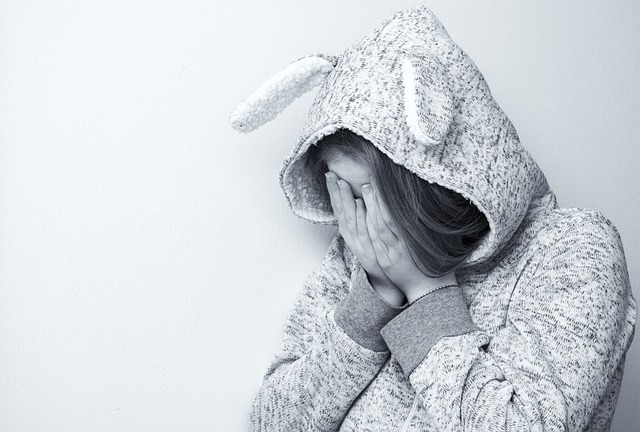
How Do You Deal With An Anxious Partner?
Loving someone with an anxious attachment style isn’t easy but some of these tips can help.
- Be clear about your expectations around privacy. Let them know exactly what your personal preferences are. How much time do you like to spend alone? When in a relationship do you like to introduce a partner to your friends? To your family? What is the window of time that you usually text back or call back?
- Do not cross your own boundaries. If something like location tracking or sharing passwords are boundary areas for you, keep those boundaries firm. Even though this may cause someone who attaches anxiously to ramp up in the moment, in the long run, giving in to the anxiety ultimately makes it worse.
- Communicate clearly about your time apart and be true to your word. When you are doing something apart from your partner, be clear about whether or not you’ll talk to them while you’re there, when you return, or the next day. Stay true to what you agreed to.
- Be consistent! For someone who has an anxious partner, it’s helpful to remember that consistency is one of the most stabilizing tools in your belt. Being predictable, reliable, and honest over time helps reduce the amount of tension that the anxious partner experiences. We say that time + consistency = trust.
- Seek mutual understanding. When you engage in conversations about the relationship, it’s helpful to have “better understanding” be the overall goal. Often we go into a challenging discussion thinking that the goal needs to be “agreement.” This creates a tension that can end up looking like the dynamic in an anxious avoidant relationship, and the landscape of the discussion becomes my way vs. your way. Mutual understanding is a much healthier conversational goal when the attachment style of the participants differs.
- Speak to a professional. Know when you’ve reached the limit of your understanding about you and your partner’s attachment styles. Loving an anxious partner isn’t easy and most of us don’t easily know how to stay in secure attachment. The pursuer-pursued chase of an anxious-avoidant relationship is a pitfall that people often fall into when they love someone with an attachment style that is anxious. Let the pros come in and help here.
Learn To Bond Securely With Our Expert Love Avoidance Coaching
The thing to remember here is that your relationship can get better and you can manage and tolerate uncomfortable emotions while maintaining self-care. If you want help to move away from old patterns and create relational alignment and freedom, then contact PIVOT.

Understanding Attachment Styles Is Part Of Our Expertise!
At PIVOT, our coaches are trained in understanding attachment styles. There are consistent characteristics to each attachment style, and to the interaction of each attachment style that we understand well.
We are here to help you build healthier relationships by offering insightful relationship advice and guidance to individuals and couples. You can also learn to find happiness in your relationships in one of our in-depth love avoidance relationships workshops and retreats. No matter what your relationship struggles may be, reach out to PIVOT today!